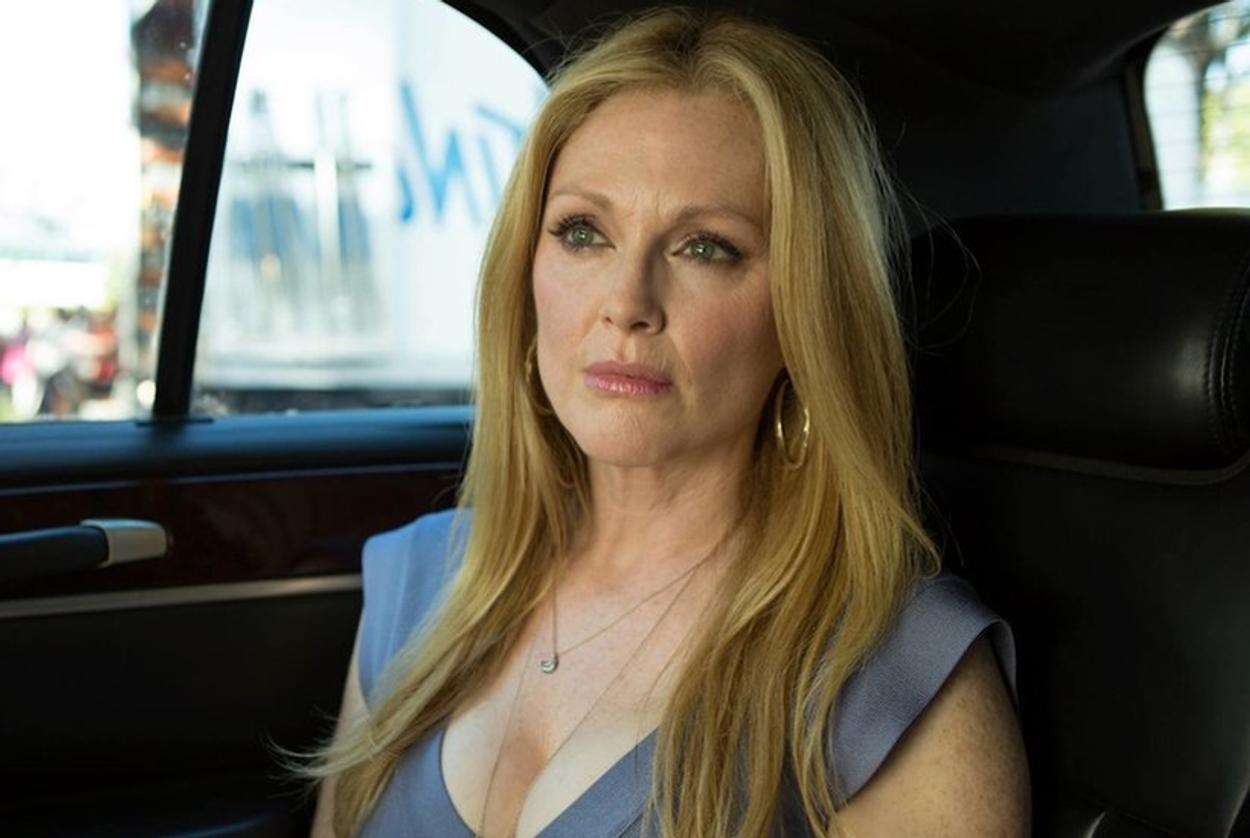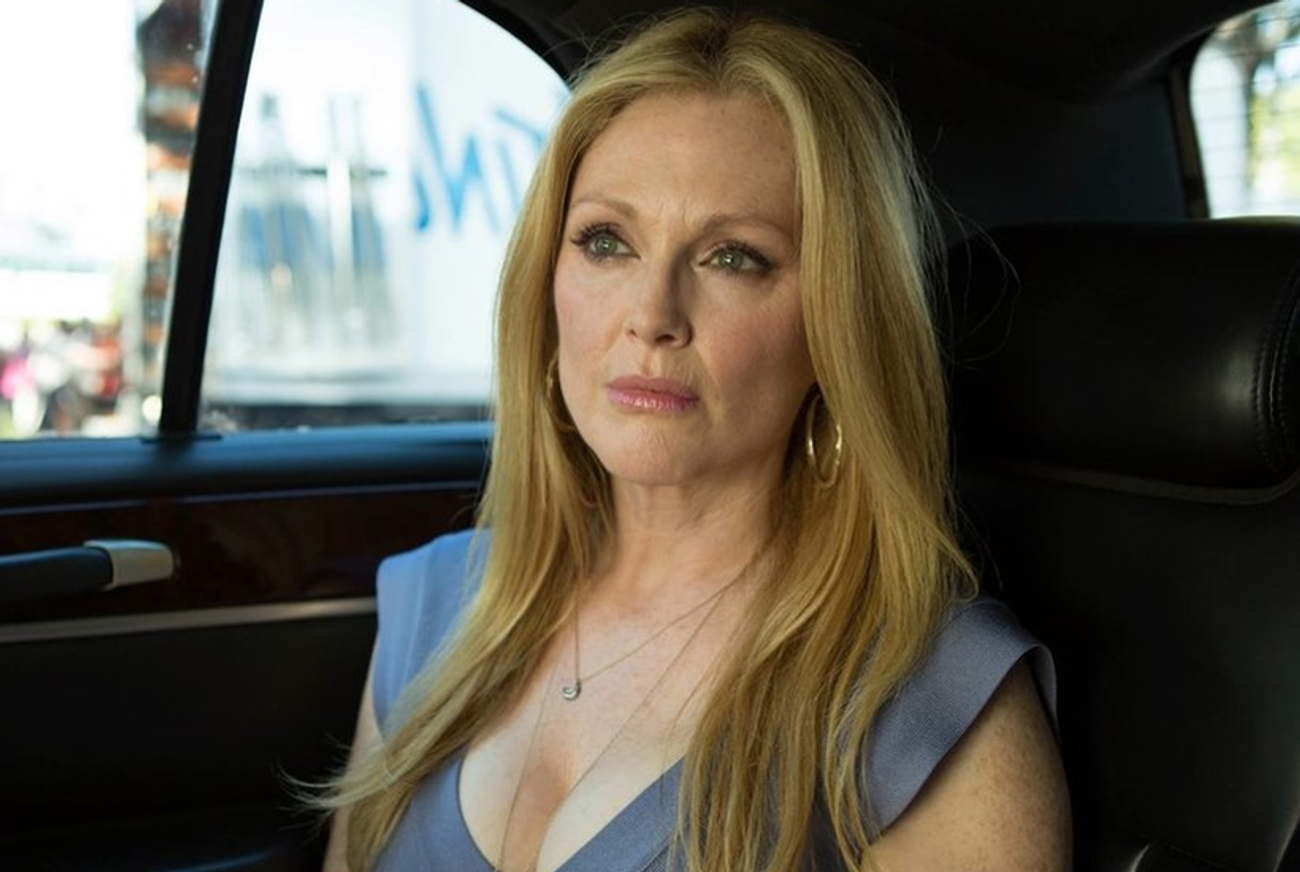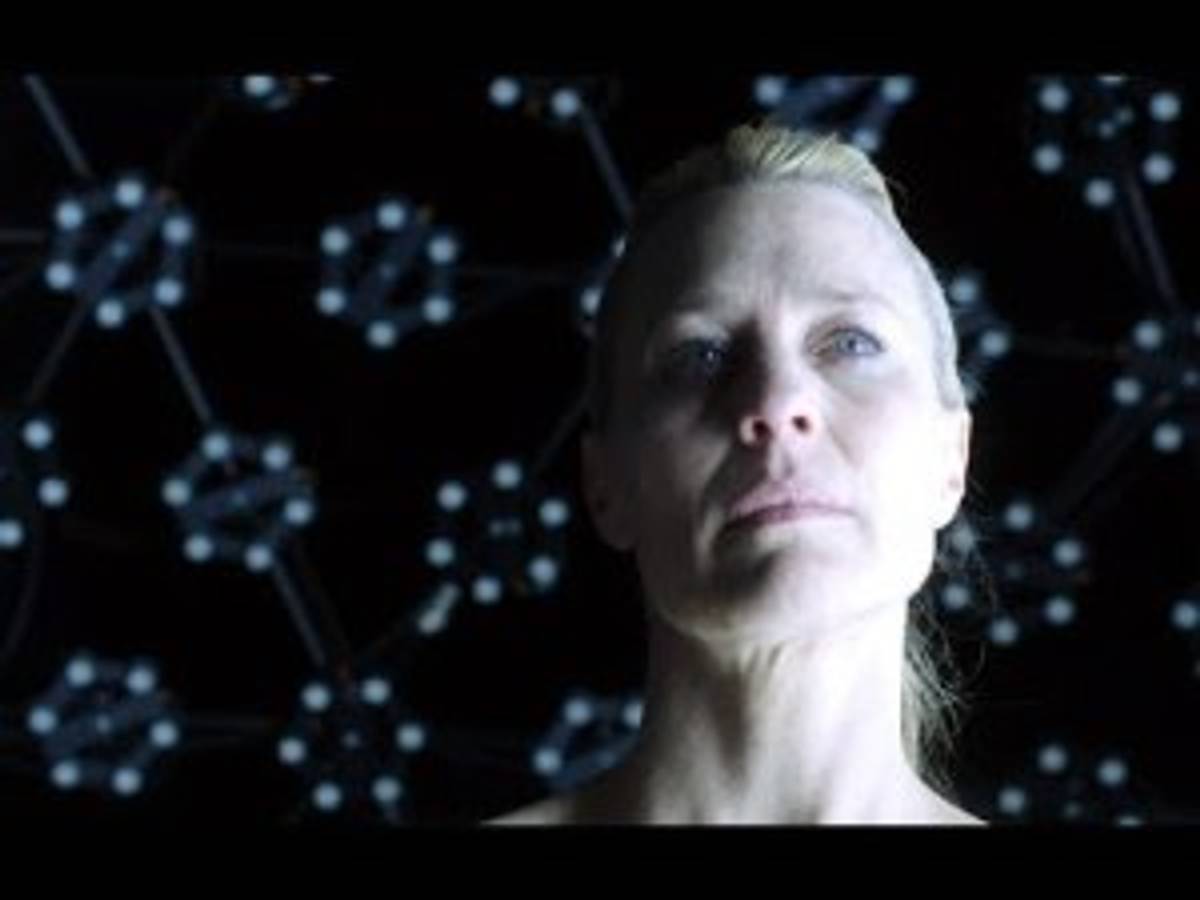Rotting Corpse-Brides of Jewish Hollywood
Ari Folman’s sci-fi half-animated ‘The Congress,’ David Cronenberg’s horror comedy ‘Maps to the Stars,’ and the end of movies




So many Jews are in the show biz.
Tom Cruise isn’t Jewish, but I hear his agent is …
—Adam Sandler, “The Chanukah Song”
Some weeks ago, during the course of a televised discussion on Selma and the Oscars, an old colleague of mine explained that the reason the Motion Picture Academy appeared so oblivious to movies by or about women and people of color was that the Academy members “all look like me,” which he clarified as “over 50” and Jewish (adding, “I would quit if I were a member”).
How responsible should Jews feel for Hollywood? Ever since the 1920s, the movie industry and the so-called movie moguls who ran the studios were targets for nativist anti-Semites, and while overt anti-Semitism was largely shamed into silence after World War II, I’ve seen sidewalk bookstalls where copies of Neal Gabler’s popular history, ironically if exuberantly titled An Empire of Their Own: How the Jews Invented Hollywood (as opposed to how “Some Jews Helped Invent Hollywood”), were displayed alongside The Protocols of the Elders of Zion.
More recently, Ben Urwand’s scurrilous scholarly history The Collaboration: Hollywood’s Pact With Hitler accused the moguls of being gutless accommodationists or worse. Is Hollywood a source of Jewish pride or shame? Is it Jewish at all? Taking audience questions following a screening of Hollywoodism, a documentary adaptation of Gabler’s book, I was impressed that the very first interrogator to get the floor demanded to know in what sense the unreligious, assimilationist, shikse-marrying moguls should even be considered Jews.
A case could be made that filmmakers D.W. Griffith and Cecil B. DeMille, studio bosses Walt Disney and Darryl Zanuck, censors Will Hays and Joseph Breen, and superstars Charlie Chaplin and Marilyn Monroe had as much influence on American movies as any of the moguls. None of them were Jews, although Chaplin was often thought to be—does association with Hollywood automatically turn people Jewish? Marilyn converted to marry a Jew. (On the other hand, DeMille’s mother may have been of Jewish descent but was a devout Episcopalian. Did Hollywood make him more “American”?)
In any case, historical circumstance created a situation whereby newly emancipated Jews, mainly immigrants from Eastern Europe heading West and settling in the poorer districts of large urban centers at more or less the moment that movies were born, would be heavily represented at all levels of motion picture production, exhibition, and distribution as the industry developed in the United States and elsewhere during the first decades of the 20th century. For many Jews, Hollywood could be imagined as a family business in the sense that one might have—or might easily envision—a rich uncle or an arty second cousin with some connection to the industry, even if it were only working in a film lab or writing movie reviews. Familiar yet disturbing, Hollywood and its folkways are both comfortably hamish and utterly weird, or what Freud called unheimlich.
How responsible should Jews feel for Hollywood? Is Hollywood a source of Jewish pride or shame?
These thoughts are prompted by two recent movies pondering Hollywood and the future of the motion picture medium, both filled with inside baseball and both by Jewish filmmakers: the just-released Maps to the Stars, directed by the great David Cronenberg from Bruce Wagner’s script, and The Congress (barely released commercially but easily available on disc or online), loosely adapted from Stanisław Lem’s science-fiction novel The Futurological Congress, by writer-director Ari Folman, best known for his 2008 animation Waltz With Bashir.
Wagner—who once described his friend and fellow L.A. novelist James Ellroy as “a Jewish kid who grew up south of Wilshire Boulevard in Beverly Hills, in the cheap seats”—is a Hollywood native son. But although Cronenberg is Canadian and Folman is Israeli, one can see how Hollywood might be the American institution which they feel closest to and, for that reason perhaps, most ambivalent about.
Cronenberg and Folman both have an affinity for the fantastic and dreamlike, and, however differing, their oeuvres have other points of contact. Cronenberg, who once cast himself as the title (and only) character in a short film, made for the Cannes Film Festival, titled At the Suicide of the Last Jew in the World in the Last Cinema in the World, addressed origins of psychoanalysis in A Dangerous Method, and Folman, who dramatized his post-Lebanon stress disorder in Waltz With Bashir, was the original head writer for the Israeli TV series BeTipul (too briefly Americanized as In Treatment), in which each episode is a psychoanalytic encounter.
Both men have made movies about uncanny Russian émigrés—Eastern Promises and Saint Clara—who might, in a sense, be their forebears, and, although far too intense to be shown together on a double bill, their respective meditations on the 21st-century movie industry are oddly complementary and mutually illuminating.
***
Maps to the Stars and The Congress are both hallucinatory tall tales grounded in family histories, which, in the case of the more lurid Maps, include instances of incest and abuse. Both movies are set in a realm where lies are common currency and delusions of grandeur ubiquitous, both are populated by powerful producers, pampered (or mistreated) stars, and hustling (and hapless) agents.
As movies about the movie business, The Congress and Maps follow the trail blazed by Billy Wilder’s 1950 classic Sunset Boulevard—in which a deranged movie queen, played by actual silent star Gloria Swanson, takes a young and unsuccessful screenwriter, William Holden, as her lover and script doctor. Enlisted in her hoped-for, albeit chimerical, comeback, he winds up the victim of her jealous rage. The image of his corpse splayed out and floating in the diva’s swimming pool is as indelible as that of the madwoman advancing toward the camera in search of her close-up.

At once proof and contraction of the motion picture medium’s promise to preserve youth, the image of an aging star is inherently uncanny—and also universal, everyone’s mortality writ large. Maps and The Congress evoke the agony of the rejected actress with an emphasis on her once-radiant body and skin. Robin Wright, who plays herself in The Congress, is highly sympathetic. The movie opens with a close-up of the 44-year-old actress shedding a tear as her agent (Harvey Keitel) tells her that, in the brave new world of digital filmmaking, she has no choice but to license her image, represented by a poster of The Princess Bride, to Miramount Studios in perpetuity. Cronenberg’s movie is crueler. Julianne Moore plays Havana Segrand as a fading star, haunted (literally) by her dead mother, an even bigger star, and seeking to “resurrect” her own career by playing said mother in a remake of her greatest hit.
Like Sunset Boulevard, both Maps and The Congress satirize even as they attest to the power of motion pictures to recall the past and restore the dead to life. The Congress, however, is a sci-fi story of reanimation that is itself a half-animated movie while Maps, described by Wagner as “a metaphysical burlesque that takes place in a graveyard” is a horror comedy. Havana Segrand is only one of several monsters—there is also her “chore-whore” Agatha Weiss (Mia Wasikowska), as well as Agatha’s brother, the mega brat child star Benjie Weiss (Evan Bird). Moreover, the dead keep showing up to spook the living.
How Jewish are the films? The most prominent producers have names that sound Jewish-Americanized—Jeb Berg in Maps, Jeff Green in The Congress—and the latter, a Mephistophelian bully (played by Danny Huston and possibly inspired by Harvey Weinstein) cynically tells Robin that movies about “Nazis and Holocaust bring in awards.” Still, the only overtly Jewish characters are the agents. Keitel is a somewhat sad-sack master of manipulation; the agent played by Joe Pingue in Maps is even more pathetic, berated by his star 13-year-old client as “Museum of Tolerance” and “Jew Faggot.” Less stigmatized, Havana’s agent Genie (Dawn Greenhalgh) is more of a reality principle, a motherly type with a New York accent. What’s striking is that these characters neither make movies or nor appear in them. Their job is sealing the deal and selling the image. They interpret dreams, mediating between the sacred stars and their adoring or indifferent public.
The movies might be seen as a Jewish business in the same way that psychoanalysis has been called a “Jewish science” or the American Communist Party was once taken for a Jewish outfit or, for half a century, Broadway musicals were recognized as a Jewish art form. All of these institutions share ideologies that can accommodate a displaced religious fervor or encourage an anti-religious skepticism or, often, both at once. In Hollywood terms, the original Jazz Singer—in which the son of an immigrant cantor becomes an American superstar singing about his “mammy from Alabammy”—illustrates displacement, while, with its sardonic take on the religion of the movies, Sunset Boulevard would be an example of the latter.
Indeed, for some of the Hollywood powers that were, Wilder was seen as the equivalent of a self-hating Jew. According to the legend, after a preview screening on the Paramount lot, enraged MGM potentate Louis B. Mayer, one of the archvillains of Urwand’s book, confronted the director, a fellow Polish-Jewish immigrant, by way of Berlin, screaming that Wilder had disgraced the industry that made and fed him and should be tarred and feathered and run out of Hollywood. (To which the unintimidated Wilder supposedly replied, “Fuck you.”)
Reeling from one freak scene to the next, Maps suggests that movies are a tawdry pagan mystery cult—the epitome of what, following the tabloids of the 1920s, Kenneth Anger called “Hollywood Babylon.” Watching the stars in their baths or attended by body servants and soothsayers, we could be watching The Fall of the Roman Empire or enjoying The Last Days of Pompeii. Ending as it does with a mock Egyptian death ritual, Maps to the Stars might have been set in L.A.’s citadel of antiquities, the Getty Museum.
It was with Sunset Boulevard, a movie narrated by its dead anti-hero from beyond the grave, that motion pictures first recognized themselves as history. It was around the time that the movie was released that, according to the screenwriter Ben Hecht, producer David O. Selznick told him that “Hollywood’s like Egypt. Full of crumbling pyramids. It’ll never come back. It’ll just keep crumbling until finally the wind blows the last studio prop across the sands.” Maps and The Congress take that fatalism for granted.
Maps evokes a hellish eternal present where even the stars of the ’90s have been forgotten and 15-year-old wannabes refer to a 23-year-old starlet as “menopausal.” Surpassing Sunset Boulevard in its contempt, Maps may be the most doggedly desecratory and generally Hollywood-hostile movie made in Hollywood since the disastrous 1970 adaptation of Myra Breckinridge effectively terminated the career of its director Michael Sarne (the London-born child of Central European Jewish refugees). Cronenberg and Wagner are implacable in their joint jeremiad. Their Lala-land is a perpetual Night of the Living Dead, in broad daylight with palm trees.
The Congress is at once more extreme and more elegiac. “Pretty soon this whole structure that we love so much will be gone,” Keitel tells Robin sadly. He’s speaking about the end of acting, but well before the movie ends it suggests that motion pictures as we knew them will be replaced by video games and physically ingested chemical shocks to the brain. The crazy thing is that once Robin licenses her avatar to Miramount Studios and enters the “restricted animation zone” that presumably represents the future of movies, The Congress erupts into the some of the trippiest animation since Yellow Submarine—and also some of the best. Melancholy as he may be, Folman is not about to give up Joseph’s Technicolor dream coat.
J. Hoberman was the longtime Village Voice film critic. He is the author, co-author, or editor of 12 books, including Bridge of Light: Yiddish Film Between Two Worlds and, with Jeffrey Shandler, Entertaining America: Jews, Movies, and Broadcasting.